Claire Giordano’s Wilderness Permit Paintings
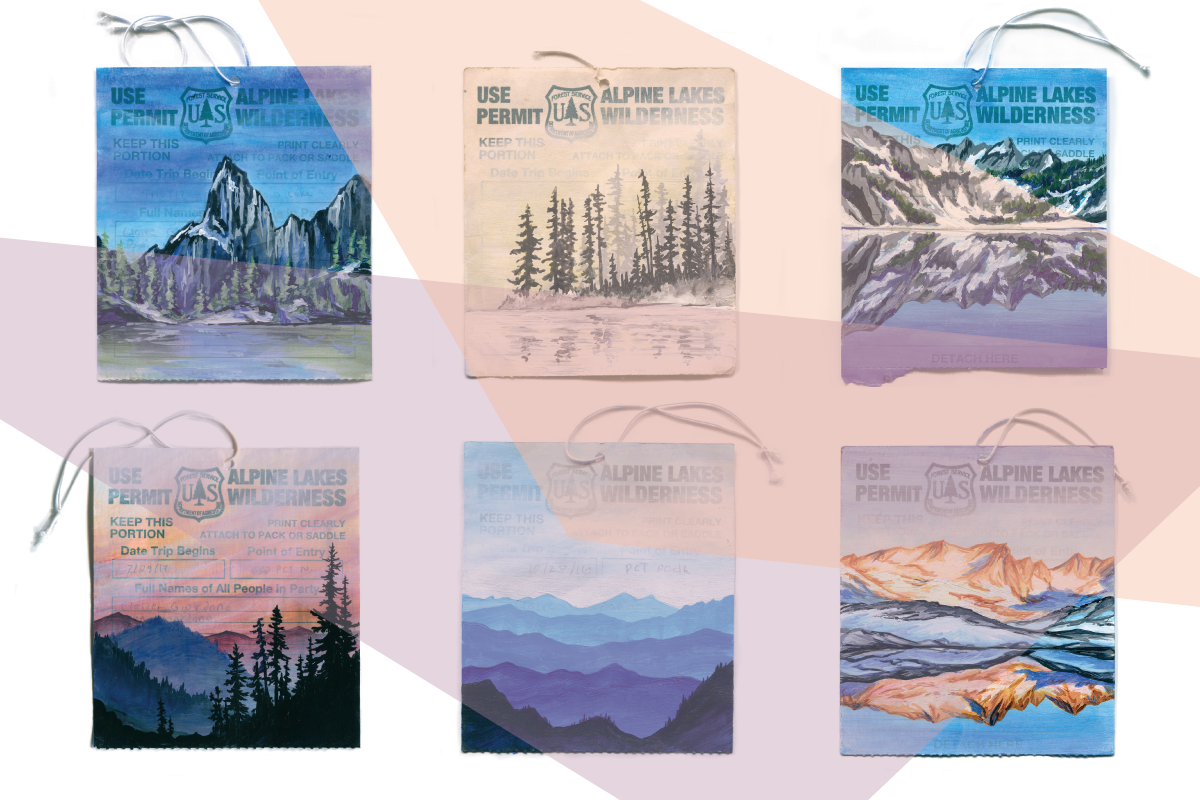
Claire Giordano: Wilderness Permit Paintings
Painter
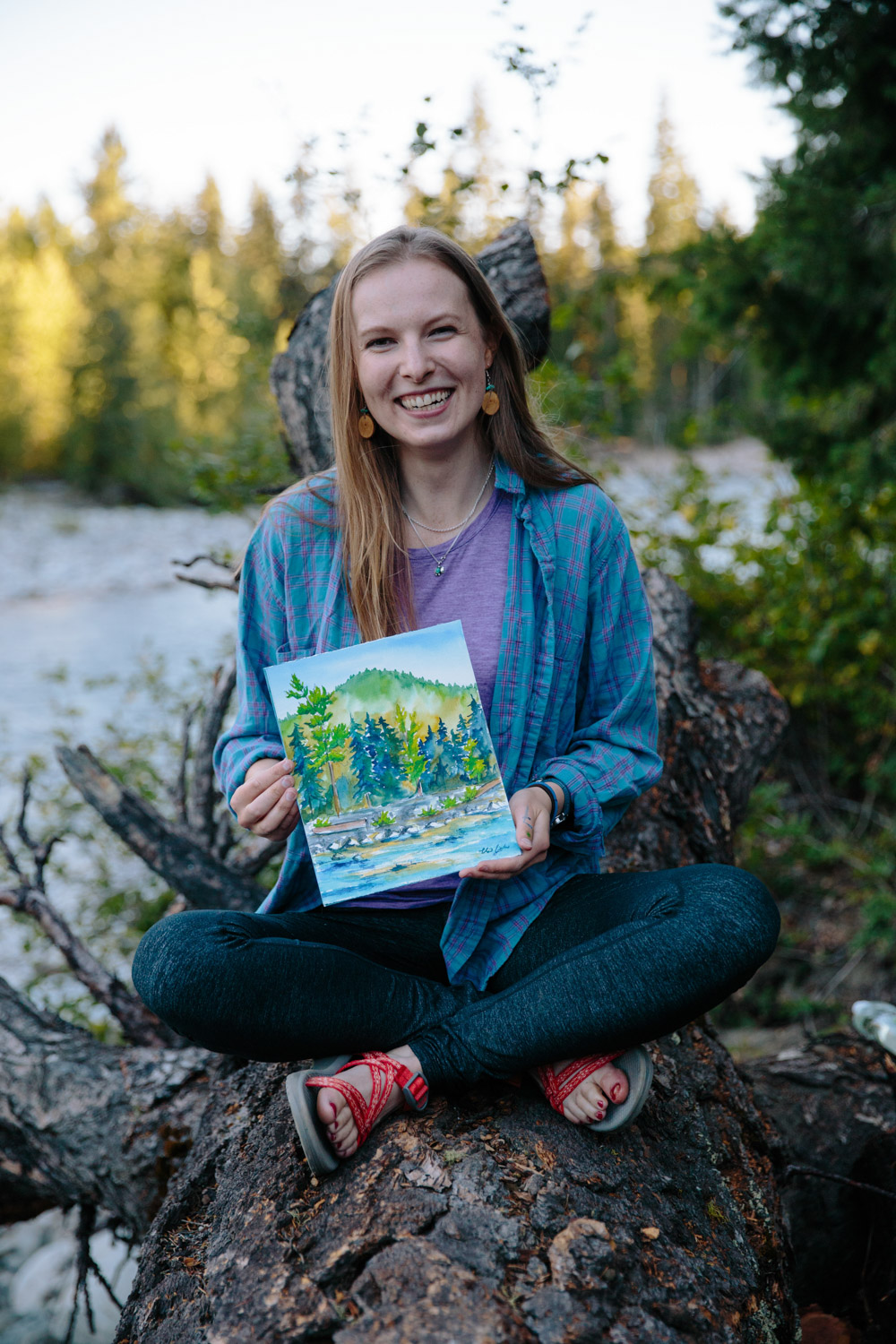
Claire in her element — photo by AJ Wells
Interview by Hailey Hirst
At their purest purpose, wilderness permits are a piece of paperwork that grant us access to federal land and help the forest service track visitation. But these permit tags are also a token of a trip, of time and energy spent in a specific place, like a ticket stub that we save.
For Claire, these tags have been somewhere and back again, and then intentionally kept for what they represent. She then gives them new life by turning them into a tactile canvas.
In their painted form, they represent not only a condensed experience, but also an acknowledgment of land use and the impact of that act. Claire hopes her series of acrylic landscapes will inspire others to become better stewards of areas like the Alpine Lakes Wilderness, too.
Claire’s work makes us think about what we carry with us; what we keep and care for—whether it’s a permit, a photograph, or a place.
Find out more, in Claire’s words:
Introduce us to your Alpine Lakes Wilderness permit paintings. How did this project begin? What’s the creative process like?
Dust. Moss. Glittering reflections on water. Watching my dad attach a hiking permit to my pack. When I think of an alpine lake these are a few of the memories that arise from the constellation of experiences gathered over years of hiking.
I was 12 years old the first time I visited a remote lake in the Alpine Lakes Wilderness, and it was the longest day hike I had ever done. I remember following my dad’s footprints across the final pile of scree and immediately finding a huge rock to sit on above a heart shaped lake. I sat there for over an hour, unwilling to leave a place where I felt deeply connected to something larger than myself.

The Enchantments and the corresponding permit, an experience condensed.
It was memories like this that came rushing back when I found a stack of old permits from the wilderness area. The oldest permit was a pale shade of yellow, reminiscent of the light that filtered through mist-shrouded trees when I packed up a camp. Another—amazingly—still smelled slightly of smoke, lingering evidence of the fire that closed our trailhead and tinted the sky an intimidating shade of red as we hiked an extra two days to Snoqualmie Pass. Leafing through the small pile I realized each permit held a story, and that I wanted to bring those memories into the present moment with paint.
I realized each permit held a story, and that I wanted to bring those memories into the present moment with paint.

This is how each painting begins; with a permit cradled in my hands and an opening of the memory banks. The scene I choose to paint is an amalgamation of what made the moment special and the story that still moves my heart years later.
Every painting is also based on a photo I took during the hike, and the minutes spent gently looking through images helps me choose the color palette and which details to focus on. Unlike most of my recent work, the permit paintings are made with acrylic paint. After years of working in watercolor these miniature paintings (each is no more than 4.5 inches tall) are invariably challenging and an incredible learning experience. On this scale, every brush stroke counts as I try to distill my emotional and physical experience of place into a few square inches.
On this scale, every brush stroke counts as I try to distill my emotional and physical experience of place into a few square inches.
Why the Alpine Lakes Wilderness? What drew you here?
The Alpine Lakes Wilderness will always have a special place in my heart; it is where I fell in love with hiking and first understood the innate value of wild places.
I grew up knowing nature as a place for my imagination, as a teacher, and as a friend when classmates were more interested in makeup than the types of flowers blooming. I was privileged to have parents who took me hiking and encouraged me to learn from the outdoors through personal experience.
But, it wasn’t until that hike as a teenager that I realized the reasons I loved being outside were also at the heart the innate value of wild and open places. While sitting on that rock on my first Alpine Lakes hike, I experienced how the value of the place transcended my participation. This understanding is an underlying current in this project and most of my work.
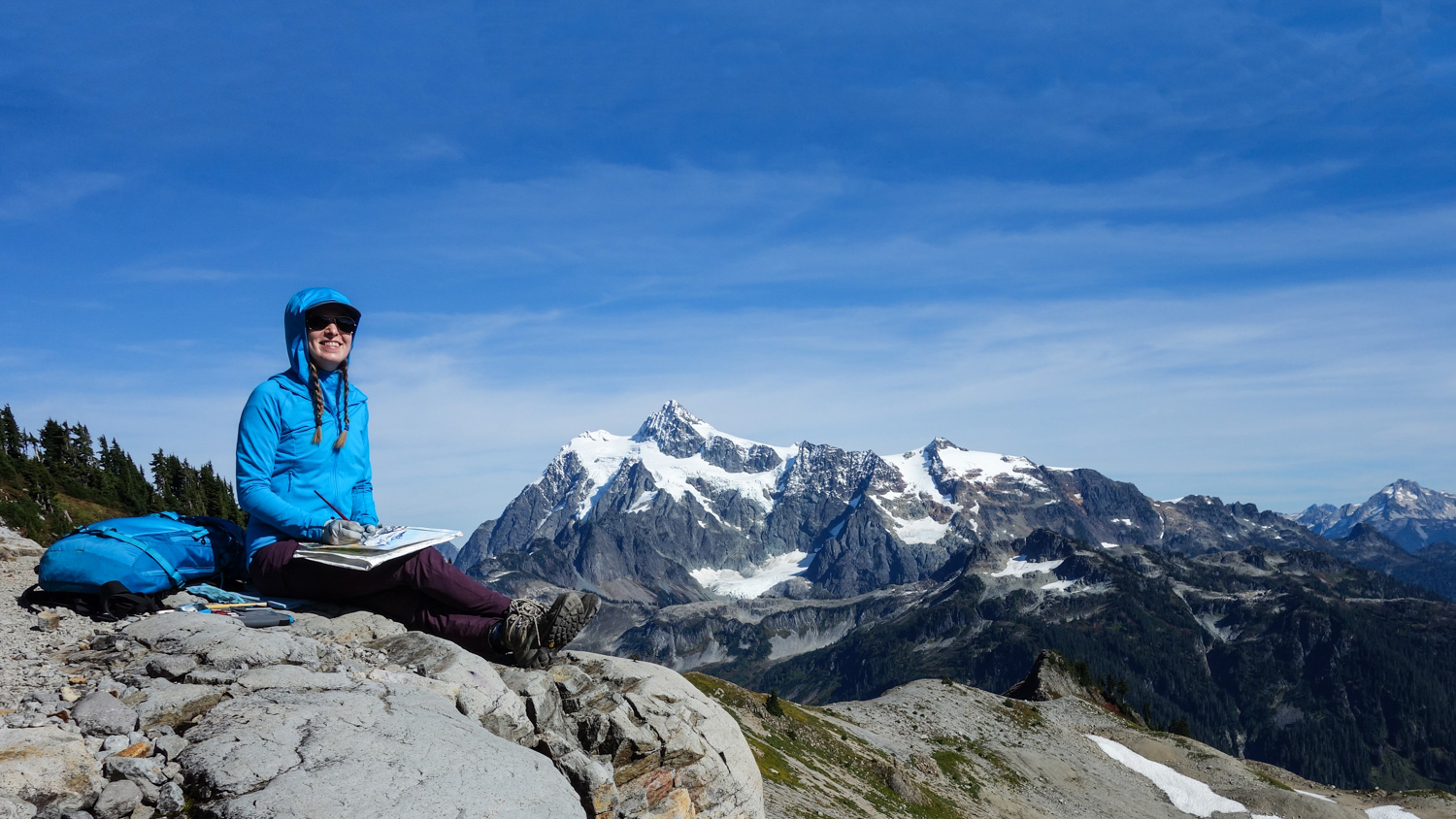
“While sitting on that rock, I experienced how the value of the place transcended my participation. This understanding is an underlying current in this project and most of my work.“
Alpine Lakes is incredibly accessible to me. It’s a 40-minute drive from my home, and within an hour-and-a-half of the major metropolis that Seattle has become. This accessibility means that I am able to hike the same trails year after year, layering memories and observations.
You say the project began with the “collected detritus of an avid wanderer” and now the tags have taken on new life as part of something larger. Can you speak to this transformation?
The first time I hiked in the wilderness area it felt incredibly remote, even though I was only five miles from an enormous ski area parking lot. Aside from the trails and occasional voices of fellow hikers it was hard to find evidence of human impact. As I continued to hike in the wilderness area and honed my observation through the lens of painting, however, I began to notice changes. Where one trail led to a lake there are now five. In one of the most inaccessible corners I spent an hour dispersing a huge pile of charred logs and an illegal fire ring at the center of a campsite, and the next day wildfire smoke spoke of a shifting climate. On a weekend hiking to the most popular lakes it is not possible possible to listen for silence anymore.
…Each painting is a deeply meaningful moment, but it is painted on an artifact that marks another traveler to a fragile ecosystem.
At the same time, I see more people than ever before outside; smiling, exercising, and exploring this beautiful place. I am torn between my hope that everyone can experience the peace and rejuvenation of these places with the recognition that we are loving them to death. The permit paintings evolved into a living emblem of this dichotomy; each painting is a deeply meaningful moment, but it is painted on an artifact that marks another traveler to a fragile ecosystem.
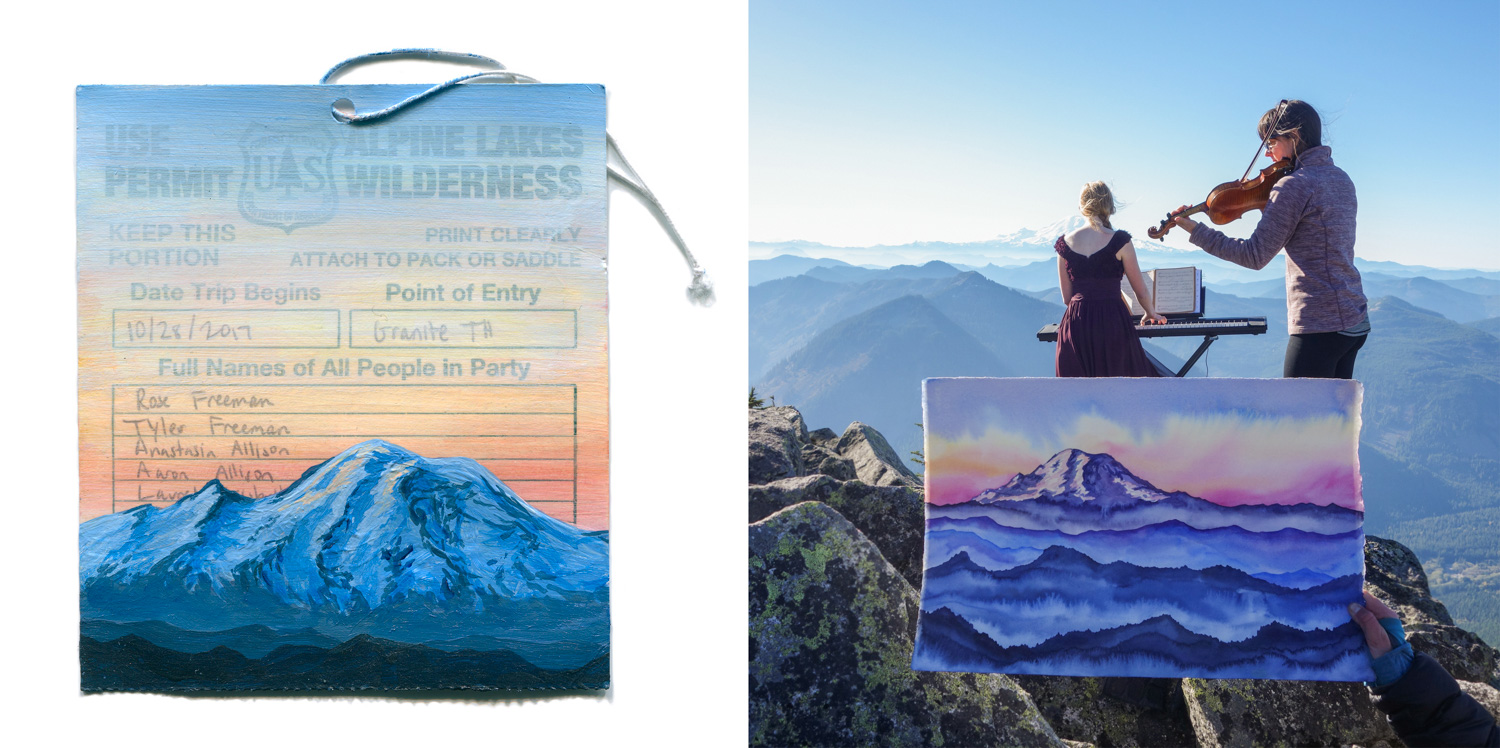
Granite Mountain permit and outdoor shot from Claire’s hike with the Musical Mountaineers.
What greater awareness are you hoping to support/emphasize with this series?
With these paintings I want to bring attention to the importance of the permits and our impact as visitors to these spectacular areas. The scenes I choose to paint are moments when I am acutely aware of both the incredible beauty and my responsibility to tread lightly and minimize my impact as a steward of public land.
Before I paint on it, the permits serve a very specific purpose. They help land agencies track visitor numbers, understand how we are interacting with the wilderness, and make management decisions. The sad thing is, however, that many hikers don’t know how important they are and never fill out a permit. Last year at a premier trailhead less than half the hikers stopped to fill out a permit during the ten minutes I watched.
It is my sincere hope that these paintings might inspire someone else to become a steward of these places, too.
Has this project impacted your other work as an artist?
Starting this project last year marked a turning point in my artistic focus. I now dedicate a third of my time to creating art that explore human impacts on the land (especially climate change) and working with scientists to communicate their research through visual and written stories. The project I am most excited about is a series of illustrations highlighting the recession of local glaciers in Washington.
Claire recently created a poster featuring nine of her favorite permits. A portion of the proceeds from poster sales are donated to the National Forest Foundation. To learn more about the NFF, go here.
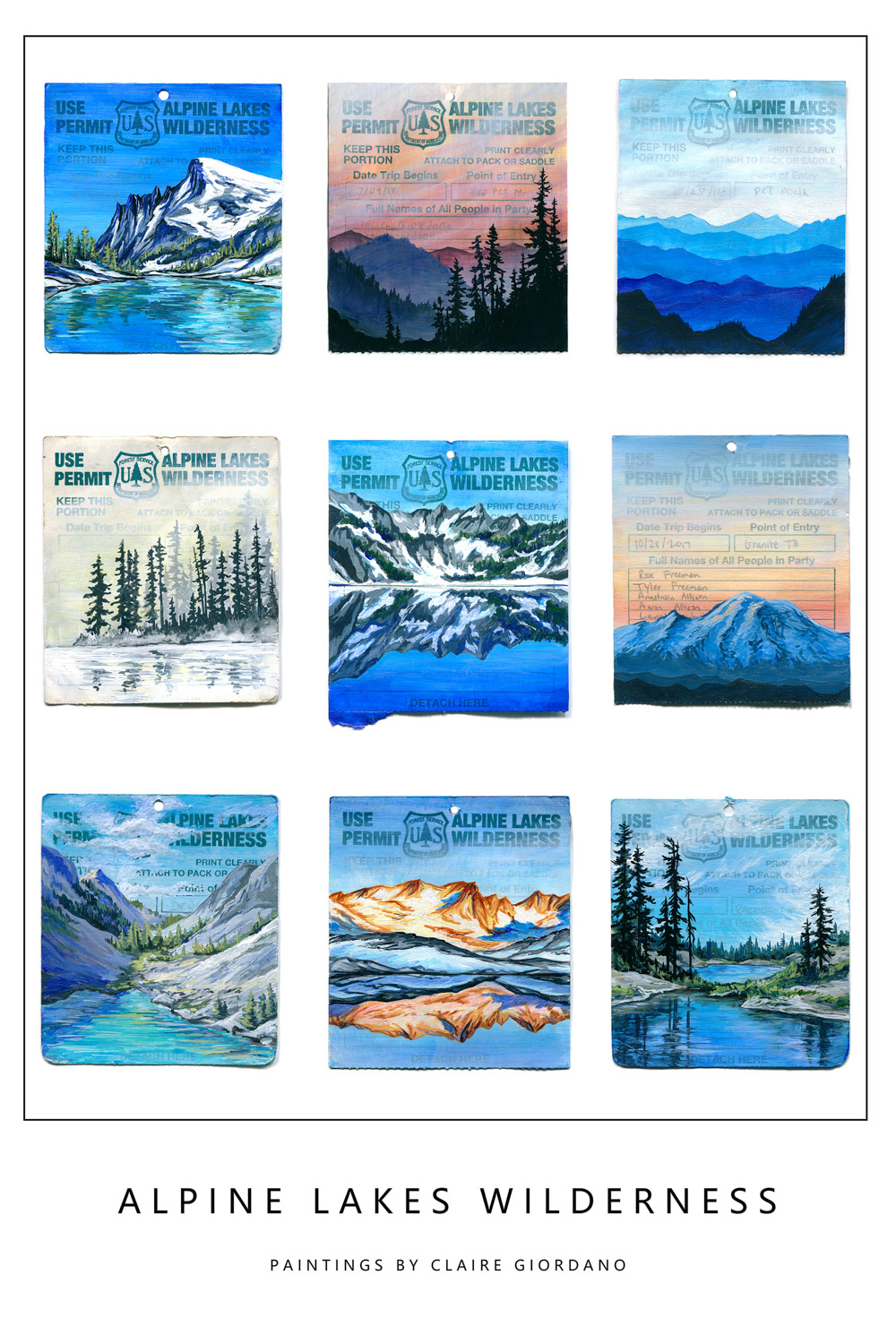





Be the first to comment